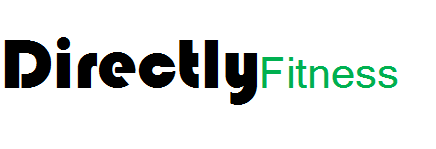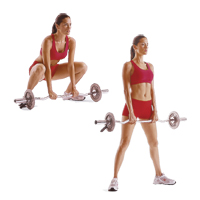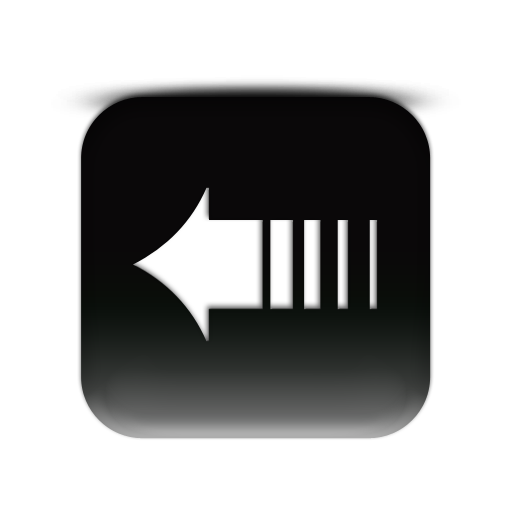Exercise Techniques
Like the site? Sign up for the FREE newsletter. I'll send a new article once or twice a month. Unsubscribe
anytime.
anytime.

About this Site l Contact l Free Newsletter l Subscribe to Rss Feed
Recommended Products l Fitness Store l Directly Fitness Blog
Recommended Products l Fitness Store l Directly Fitness Blog

Also available to learn:
How to Perform Sumo Deadlifts:


Proper Exercise Technique:
SUMO DEADLIFT
Find this site useful? Click the donate button. Its greatly appreciated.
Think a friend might benefit from this page? Share it!
Think a friend might benefit from this page? Share it!
Note:
This is a complex movement and takes practice before attempting to move heavy weight. This movement can be mastered using only your own bodyweight first to avoid injury. When used correctly this deadlift exercise can provide muscular strength in nearly all muscles and can be used as a lower back workout which is important to all aspects of fitness.
The lower back is also a little bit less actively used during the sumo lift in comparison to the other two styles of deadlift.
shoulder width, with toes pointed out a little less than 45 degrees (this will
vary from person to person).
• If you find this exercise too challenging for the mechanics of your legs, try
moving feet wider as this will open up your thighs and increase your base of
support.
• Your shins should be touching or very close to the barbell.
• Squat down so you can comfortably grip the bar with arms remaining vertical.
• One hand should be using a supinated grip (palms up) while the other using
a pronated grip (overhand grip).
• Grip should be about shoulder width and inside your legs.
• Be sure to keep your buttocks low to the ground.
• Upper body and head should be straight with an upright posture and tight
abdominals.
• Your chest and buttocks should look as if you are sticking them out on
purpose.
and your arms.
• Drive your heels into the ground and contract your buttocks while extending
at the knees.
• The two previous steps should be done essentially at the same time (this is
where practice comes in).
• Keep chest out, keep a slight arch in the small of your back, and don’t round
the back! This is the most common mistake and will inevitably lead to
injury.
• Always concentrate on keeping your buttocks low and this will reduce
rounding of the back.
• Throughout movement keep the bar as close to your body as possible. Even
letting the bar ride up your shins and thighs is ideal (wear pants or this may
hurt).
• Abs should be contracted throughout the movement. This is important as it
will keep the pressure around your core tight. It is your “natural belt” which
mimics many common power lifting belts.
• As you begin to reach the end of the movement, be sure to not lean forward.
Lean back slightly as knees are full extended. This is the end of the
concentric movement.
• Make sure your body is upright!
• It is ideal to lower the bar as close to your legs as you can, just as in the
upward phase.
• It helps to keep upright posture by looking up to the ceiling while lowering
the weight (Neck extension naturally influences the rest of the spine to
extend).
• Make sure buttocks stays lower than your upper body as you descend.
• Movement is complete when weight touches the ground. Avoid dropping the
weight to the ground as this can damage the floor and very unpleasant to
fellow gym members.
must be learned before attempting this exercise! Try looking at yourself in
the mirror while practicing with no added weight.
• This is a high intensity exercise as almost every major muscle is being
worked! Be sure to have lots of energy and focus when performing the
deadlift.
• Be sure to inhale on the way down and exhale on the way up! If you hold
your breath in you risk passing out in the middle of the movement due to
built up pressure in your body!
• This exercise will feel very unnatural to some and most fail at forearm
strength.
• If you don’t have good forearm strength it won’t matter how strong your legs
and back are. Strength your forearms if you feel they can’t hold the bar
efficiently.
• Use lifting chalk if you feel your grip could use a little boost. You can find it at the Fitness
Store for great deals.
• If you progress to heavier sets, I recommend you use a belt to prevent injury
as it provides extra stability and support. I recommend you only use it for
those heavy sets as overusing a belt can actually lead to core weakness.
Simply do without the belt for lighter sets leading up to the heavy sets at which time you can put the belt on. This will keep you safe without having the core weakness associated with using a belt.
The best belts are the thick powerlifting style belts that are just as wide in the front as they are in the back. This allows you to push your stomach against the belt and provide more support for the lower back. I suggest you avoid the thin weight lifting belts that are pretty common in department stores. If you are interested in weight lifting belts you can find them in the Fitness Store.
This is a complex movement and takes practice before attempting to move heavy weight. This movement can be mastered using only your own bodyweight first to avoid injury. When used correctly this deadlift exercise can provide muscular strength in nearly all muscles and can be used as a lower back workout which is important to all aspects of fitness.
About the Sumo Deadlift:
This exercise is much like the Traditional deadlift except that the Sumo deadlift involves a wider squat stance, wider pointed out toes, and a narrower arm grip. Usually people will often find that because they are lower to the ground, they won’t have to lift as far, and thus can use more weight. The downside is this exercise involves a lot of flexibility in the hip region in comparison to the other two styles of deadlift. If you don’t have flexibility in this area you can try the other styles of deadlifts first.Muscles Used in the Sumo Deadlift:
Exercises every major muscle group on your body. The sumo deadlift tends to focus more emphasis to the inner and outer thigh area muscles as opposed to the “Stiff-Legged Deadlifts” and “Traditional Deadlifts”. Emphasized hip muscles are the gluteus minimus, medius, Tensor Fasciae Lata, adductor magnus, brevis, and longus, and pectineus.The lower back is also a little bit less actively used during the sumo lift in comparison to the other two styles of deadlift.
Starting Position:
• Begin by standing in front of a barbell on the ground, feet wider thanshoulder width, with toes pointed out a little less than 45 degrees (this will
vary from person to person).
• If you find this exercise too challenging for the mechanics of your legs, try
moving feet wider as this will open up your thighs and increase your base of
support.
• Your shins should be touching or very close to the barbell.
• Squat down so you can comfortably grip the bar with arms remaining vertical.
• One hand should be using a supinated grip (palms up) while the other using
a pronated grip (overhand grip).
• Grip should be about shoulder width and inside your legs.
• Be sure to keep your buttocks low to the ground.
• Upper body and head should be straight with an upright posture and tight
abdominals.
• Your chest and buttocks should look as if you are sticking them out on
purpose.
Upward Phase:
• Begin by contracting your traps and tensing the connection between the barand your arms.
• Drive your heels into the ground and contract your buttocks while extending
at the knees.
• The two previous steps should be done essentially at the same time (this is
where practice comes in).
• Keep chest out, keep a slight arch in the small of your back, and don’t round
the back! This is the most common mistake and will inevitably lead to
injury.
• Always concentrate on keeping your buttocks low and this will reduce
rounding of the back.
• Throughout movement keep the bar as close to your body as possible. Even
letting the bar ride up your shins and thighs is ideal (wear pants or this may
hurt).
• Abs should be contracted throughout the movement. This is important as it
will keep the pressure around your core tight. It is your “natural belt” which
mimics many common power lifting belts.
• As you begin to reach the end of the movement, be sure to not lean forward.
Lean back slightly as knees are full extended. This is the end of the
concentric movement.
Downward Phase:
• Slowly lower the bar with your chest and buttocks sticking out• Make sure your body is upright!
• It is ideal to lower the bar as close to your legs as you can, just as in the
upward phase.
• It helps to keep upright posture by looking up to the ceiling while lowering
the weight (Neck extension naturally influences the rest of the spine to
extend).
• Make sure buttocks stays lower than your upper body as you descend.
• Movement is complete when weight touches the ground. Avoid dropping the
weight to the ground as this can damage the floor and very unpleasant to
fellow gym members.
Tips:
• This movement is very unnatural to most and will not come easily. Formmust be learned before attempting this exercise! Try looking at yourself in
the mirror while practicing with no added weight.
• This is a high intensity exercise as almost every major muscle is being
worked! Be sure to have lots of energy and focus when performing the
deadlift.
• Be sure to inhale on the way down and exhale on the way up! If you hold
your breath in you risk passing out in the middle of the movement due to
built up pressure in your body!
• This exercise will feel very unnatural to some and most fail at forearm
strength.
• If you don’t have good forearm strength it won’t matter how strong your legs
and back are. Strength your forearms if you feel they can’t hold the bar
efficiently.
• Use lifting chalk if you feel your grip could use a little boost. You can find it at the Fitness
Store for great deals.
• If you progress to heavier sets, I recommend you use a belt to prevent injury
as it provides extra stability and support. I recommend you only use it for
those heavy sets as overusing a belt can actually lead to core weakness.
Simply do without the belt for lighter sets leading up to the heavy sets at which time you can put the belt on. This will keep you safe without having the core weakness associated with using a belt.
The best belts are the thick powerlifting style belts that are just as wide in the front as they are in the back. This allows you to push your stomach against the belt and provide more support for the lower back. I suggest you avoid the thin weight lifting belts that are pretty common in department stores. If you are interested in weight lifting belts you can find them in the Fitness Store.
Here is a video to assist you in learning the proper form for Sumo deadlifts:
Continue to learn more about how to exercise: Proper Exercise Techniques
SUMO DEADLIFT
